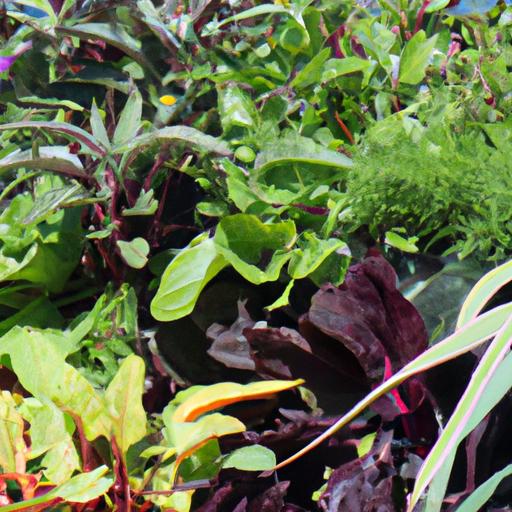Why Plants Need Sunlight
Plants, just like humans, have their own unique set of needs. One of the most crucial requirements for their growth and survival is sunlight. Have you ever wondered why plants bask in the sun’s rays? In this article, we’ll dive into the importance of sunlight for plants and explore why understanding this relationship is vital for all plant enthusiasts.
The Key to Growth and Survival
Sunlight plays a fundamental role in the life of plants. It serves as the primary energy source for a process known as photosynthesis, which is the driving force behind their growth and survival. During photosynthesis, plants convert sunlight into chemical energy, specifically adenosine triphosphate (ATP) and nicotinamide adenine dinucleotide phosphate (NADPH). These energy-rich compounds enable plants to produce glucose from carbon dioxide and water, providing them with the nutrients they need to thrive.
Unveiling the Photosynthesis Process
Let’s take a closer look at photosynthesis. This remarkable process occurs in the chloroplasts, which are tiny organelles found within plant cells. Sunlight stimulates the production of chlorophyll, the green pigment responsible for capturing light energy. As plants absorb sunlight through their leaves, chlorophyll molecules trap the energy and convert it into chemical energy through a series of complex reactions. This energy is then utilized to transform carbon dioxide and water into glucose, releasing oxygen as a byproduct.
Understanding how sunlight fuels photosynthesis is crucial because it directly impacts plant growth and development. Without an adequate supply of sunlight, plants may struggle to produce enough energy to sustain their metabolic processes. This can result in stunted growth, weak stems, and pale or discolored leaves. By comprehending the significance of sunlight, we can ensure that our plants receive the necessary conditions to flourish.
Stay tuned for the following sections, where we will delve deeper into the role of sunlight in plant growth, its impact on plant health, factors affecting sunlight absorption, and more. Let’s unlock the secrets of why plants need sunlight to unlock the full potential of our green companions.
The Role of Sunlight in Photosynthesis
Unveiling the Photosynthesis Process
To understand why plants need sunlight, we must first grasp the intricacies of photosynthesis. This remarkable process is the driving force behind plant growth and sustenance. Photosynthesis occurs within the chloroplasts, which are specialized organelles found in plant cells.
Sunlight: The Primary Energy Source
Sunlight acts as the primary energy source for photosynthesis. It provides the necessary fuel for plants to convert carbon dioxide and water into glucose, a vital carbohydrate. Without sunlight, this transformation cannot occur, hindering the plant’s ability to produce the energy it needs to survive.
Conversion of Sunlight into Chemical Energy
During photosynthesis, sunlight is captured by chlorophyll, the green pigment present in plants. This pigment absorbs light energy and utilizes it to convert adenosine diphosphate (ADP) and inorganic phosphate (Pi) into adenosine triphosphate (ATP), a high-energy molecule. Additionally, sunlight enables the conversion of nicotinamide adenine dinucleotide phosphate (NADP+) into NADPH, another crucial energy carrier.
Glucose Production: The End Result
The energy harvested from sunlight, in the form of ATP and NADPH, is combined with carbon dioxide and water to produce glucose. Glucose serves as the primary source of energy and nourishment for plants. It is utilized for various metabolic processes, such as growth, reproduction, and cellular respiration.
Understanding the pivotal role of sunlight in photosynthesis allows us to appreciate why plants need a sufficient amount of sunlight to thrive. Without this essential ingredient, the photosynthesis process would be impeded, resulting in weakened plants that struggle to meet their energy demands. In the next section, we will explore how sunlight influences plant growth and development.
Sunlight and Plant Growth
When it comes to plant growth, sunlight is a powerful ally. Its presence not only provides energy for photosynthesis but also influences various aspects of plant development. Let’s explore how sunlight plays a vital role in promoting healthy growth and unlocking the full potential of our leafy friends.
Stimulation of Chlorophyll Production
One of the primary effects of sunlight on plant growth is the stimulation of chlorophyll production. Chlorophyll, the green pigment found in plant cells, is responsible for capturing light energy during photosynthesis. Sunlight acts as a catalyst, triggering the synthesis of chlorophyll molecules within plant tissues. As chlorophyll levels increase, plants become more efficient at harnessing sunlight, resulting in enhanced energy production and overall growth.
Promotion of Cell Elongation and Development
Sunlight also influences cell elongation and plant development. When plants receive sufficient sunlight, it triggers a series of biochemical reactions that promote cellular expansion. This process allows plants to grow taller, develop stronger stems, and reach towards the sun’s rays. Additionally, exposure to sunlight encourages the production of plant hormones, such as auxins, which regulate cell division and elongation, further contributing to robust growth and development.
Influence on Leaf Size, Shape, and Color
The amount and quality of sunlight received by plants have a direct impact on leaf characteristics. Adequate sunlight exposure leads to larger leaf size, allowing for increased surface area to capture more light energy. Additionally, sunlight influences leaf shape and color. Leaves that receive ample sunlight tend to be broader and greener, while those in shaded areas may appear narrower and lighter in color. These adaptations optimize light absorption and maximize photosynthetic efficiency.
Sunlight’s Role in the Production of Secondary Metabolites
Beyond its influence on primary metabolism, sunlight also plays a crucial role in the production of secondary metabolites. These compounds are not essential for plant survival but contribute to various functions like defense against pests, pathogens, and environmental stressors. Sunlight exposure triggers the synthesis of secondary metabolites such as flavonoids, terpenoids, and alkaloids, which help protect plants and contribute to their unique characteristics, such as aroma, flavor, and medicinal properties.
Understanding the profound impact of sunlight on plant growth allows us to create optimal conditions for our green companions. By providing them with adequate sunlight, we can ensure healthy chlorophyll production, promote cell elongation and development, influence leaf characteristics, and unlock the production of valuable secondary metabolites. Stay tuned as we unravel more fascinating aspects of why plants need sunlight and the factors that affect their light absorption.
Sunlight’s Impact on Plant Health
Plants not only rely on sunlight for their growth but also for their overall health and well-being. The impact of sunlight goes beyond photosynthesis and extends to various aspects of plant health. Let’s explore how sunlight influences plant health in more detail.
Activation of Vitamin D Synthesis in Plants
Did you know that plants can also synthesize vitamin D when exposed to sunlight? Just like humans, plants have the ability to convert sunlight into this essential vitamin. Vitamin D plays a crucial role in plant growth and development, aiding in the absorption of essential nutrients and promoting overall plant health. By providing plants with adequate sunlight, we ensure they have the necessary vitamin D levels to support their physiological processes.
Enhancement of Plant Immune Responses
Sunlight acts as a natural booster for plant immune responses. When exposed to sunlight, plants activate various defense mechanisms that help protect them against pests, diseases, and other environmental stressors. Sunlight stimulates the production of certain compounds and enzymes that strengthen the plant’s immune system, making it more resilient to potential threats. By basking in the sun, plants can better fend off harmful pathogens and maintain their health.
Prevention of Diseases Caused by Inadequate Sunlight Exposure
Insufficient sunlight exposure can have detrimental effects on plants, making them more susceptible to diseases. When plants don’t receive enough sunlight, they become weak and their immune system is compromised. This weakened state leaves them vulnerable to various diseases, such as fungal infections and rot. By ensuring that plants receive ample sunlight, we can prevent these diseases and promote their overall well-being.
Understanding the impact of sunlight on plant health is vital for gardeners and plant enthusiasts alike. By providing our plants with the right amount of sunlight, we not only support their growth but also enhance their immune responses and protect them from diseases. Stay tuned for the upcoming sections, where we’ll explore the factors that affect sunlight absorption by plants and how to optimize sunlight exposure for healthy plant growth. Let’s discover the secrets to harnessing the power of sunlight for vibrant and thriving plants.
Factors Affecting Sunlight Absorption by Plants
As we explore the importance of sunlight for plants, it’s essential to consider various factors that affect their ability to absorb and utilize this vital energy source. Let’s delve into the key elements that influence sunlight absorption by plants.
Impact of Plant Species on Sunlight Requirements
Different plant species have varying sunlight requirements. Some plants thrive in full sun, while others prefer partial shade or even full shade. Understanding the specific needs of your plants will help ensure they receive the appropriate amount of sunlight. Take the time to research the optimal light conditions for each plant species in your care, allowing them to flourish in their preferred environment.
Influence of Light Intensity and Duration on Plant Growth
Light intensity refers to the brightness or strength of sunlight, while light duration refers to the length of time plants are exposed to sunlight. These two factors significantly impact plant growth. Some plants, such as sun-loving flowers, require high light intensity for optimal growth, while others, like certain ferns, thrive in lower light conditions. Additionally, varying the duration of sunlight exposure can affect plants’ overall health and development. Consider adjusting the intensity and duration of sunlight based on the specific needs of your plants.
Effects of Light Quality (Wavelength) on Photosynthesis
Did you know that light consists of different colors, each with its own wavelength? This variation in light quality affects photosynthesis in plants. Chlorophyll, the pigment responsible for capturing light energy, absorbs red and blue wavelengths most effectively, while green wavelengths are reflected, giving plants their characteristic color. Understanding the importance of different light wavelengths and their absorption by plants can help you optimize their growth and health.
Consideration of Shading and Positioning for Optimal Sunlight Absorption
In addition to understanding the sunlight requirements of your plants, it’s crucial to consider factors such as shading and positioning. Overhanging trees, buildings, or other structures can create shade, limiting the amount of sunlight reaching your plants. Proper positioning of your plants in areas with sufficient sunlight is key to ensuring their successful growth. Regularly assess the surrounding environment and make adjustments as needed to maximize sunlight absorption.
By considering the impact of plant species, light intensity and duration, light quality, and shading and positioning, you can create an ideal environment for your plants to absorb sunlight effectively. Join me in the upcoming sections, where we will explore the role of sunlight in plant health and delve into the fascinating world of why plants need sunlight.
Conclusion
In conclusion, the importance of sunlight for plants’ growth and survival cannot be overstated. Sunlight serves as the primary energy source for photosynthesis, the process through which plants convert sunlight into chemical energy. This energy allows plants to produce glucose, which is essential for their growth and development.
Understanding why plants need sunlight is crucial for all plant enthusiasts. By providing plants with adequate sunlight, we can ensure they have the energy they need to carry out vital metabolic processes. Sunlight also plays a role in promoting cell elongation, chlorophyll production, and the production of secondary metabolites in plants.
Moreover, sunlight has a significant impact on plant health. It activates vitamin D synthesis in plants and enhances their immune responses, making them more resilient to diseases. Lack of sunlight can lead to weakened plants that are more susceptible to infections and other issues.
Factors like plant species, light intensity and duration, light quality, and proper positioning all affect how plants absorb sunlight. By considering these factors, we can optimize the amount of sunlight our plants receive and ensure their optimal growth.
In conclusion, providing plants with sunlight is crucial for their overall well-being. By understanding why plants need sunlight and meeting their sunlight requirements, we can nurture healthy, vibrant, and thriving plants. So, let’s embrace the power of sunlight and let our plants bask in its warm embrace.
Conclusion: So above is the Why Plants Need Sunlight article. Hopefully with this article you can help you in life, always follow and read our good articles on the website: plants.123didulich.com




